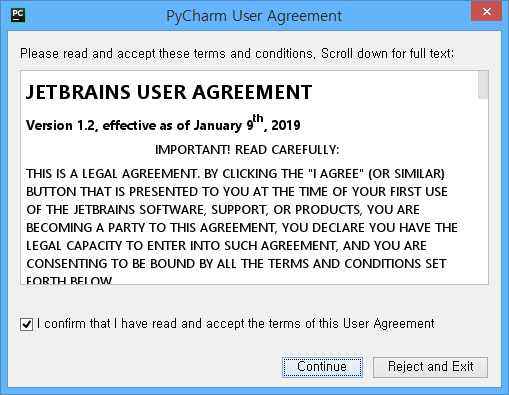
- PYCHARM PROFESSIONAL EDITION SOFTWARE
- PYCHARM PROFESSIONAL EDITION CODE
- PYCHARM PROFESSIONAL EDITION DOWNLOAD
So let’s create a data dictionary with plain Python objects, and then use some Python magic to transform these to the structures Pandas needs. One great thing about analyzing data with Pandas is that we can use all features of the Python language. Also, the information for one column would be spread among these parameters, making it hard to see what is being done to a column. As our dataset has over 150 columns, it would be a pain to write them inline. The disadvantage of these parameters is that they take lists and dicts, which become very unwieldy for datasets with many columns.


Or, just write `pd.read_csv` in P圜harm to see it in the documentation tool window (this works if you have scientific mode enabled if not, use Ctrl+Q to see the documentation). usecols – allows us to specify exactly which columns to import.įor more details, see the documentation for read_csv.converters – functions that receive the raw value of the cell for a specified column, and return the desired value (with the desired datatype).Pandas will cast values in these columns to the specified datatype. dtype – enables us to specify a datatype per column, as a dict.We can prevent that by explicitly specifying `header=0`, which indicates that the 0th row (the first row) is a header row. We need to pay attention to the fact that if we specify this parameter, Pandas will import the header column as a data row by default. names – allows us to specify the names of the columns (instead of reading them from the CSV file).To do this, we can use several parameters of `read_csv`: In this step, we’d like to make sure that our columns will be named in a way that’s easier to work with, and to make sure that the data types are all correct. A better way is to configure the `read_csv` call with various parameters. To make the data easier to work with, we could recode columns after the read_csv call, and fix things. If you scroll through the DataFrame a little more, you’ll see that in some cases Pandas was able to correctly infer some data, but in many cases it would be fairly unwieldy to work with the data in this shape. Otherwise the string ‘NA’ is inserted (if you open the CSV file directly, you’ll be able to see a lot of ‘NA’ values). If an answer was selected, that string is inserted. These columns are the result of multiple-choice answers: respondents were asked ‘What other language(s) do you use?’ and could select multiple answers.

The columns have headings like “Java:What other language(s) do you use?”. We can see the structure of the CSV file here. Click ‘View as DataFrame’ to inspect the DataFrame: On the right-hand side, we should see the variable overview with our dataframe. We should see a Python console appear at the bottom of our screen after the script completes execution.
PYCHARM PROFESSIONAL EDITION CODE
After writing this code in the `main.py` file that was created for us with the project, right click anywhere in the file and choose ‘Run’. The easiest way to do this would be to run: Our first challenge will be to load the file. Afterward, place it in the `data` folder that was created in the scientific project’s scaffold.
PYCHARM PROFESSIONAL EDITION DOWNLOAD
Please download the CSV file from the ‘Raw Data’ section of the developer survey results page.

If we want to analyze data, we’ll first need to go get some data. The scientific project also creates a folder structure for your data. Of course, for this to work you need to have Anaconda installed on your computer. After opening P圜harm Professional Edition (Scientific mode is not available in the Community Edition), choose to create a new project, and then select ‘Scientific’ as the project type:Ī scientific project will by default be created with a new Conda environment. To start, let’s create a scientific project.
PYCHARM PROFESSIONAL EDITION SOFTWARE
To try this out, let’s have a look at the raw data from the Python Developer Survey 2017 that was jointly conducted by JetBrains and the Python Software Foundation. Code cells were added to P圜harm 2018.1 Professional Edition’s scientific mode. This means you can re-run only the part of the script you’re developing right now, without having to wait for reloading your data. You can use code cells to divide a Python script into chunks that you can individually execute, maintaining the state between them.


 0 kommentar(er)
0 kommentar(er)
